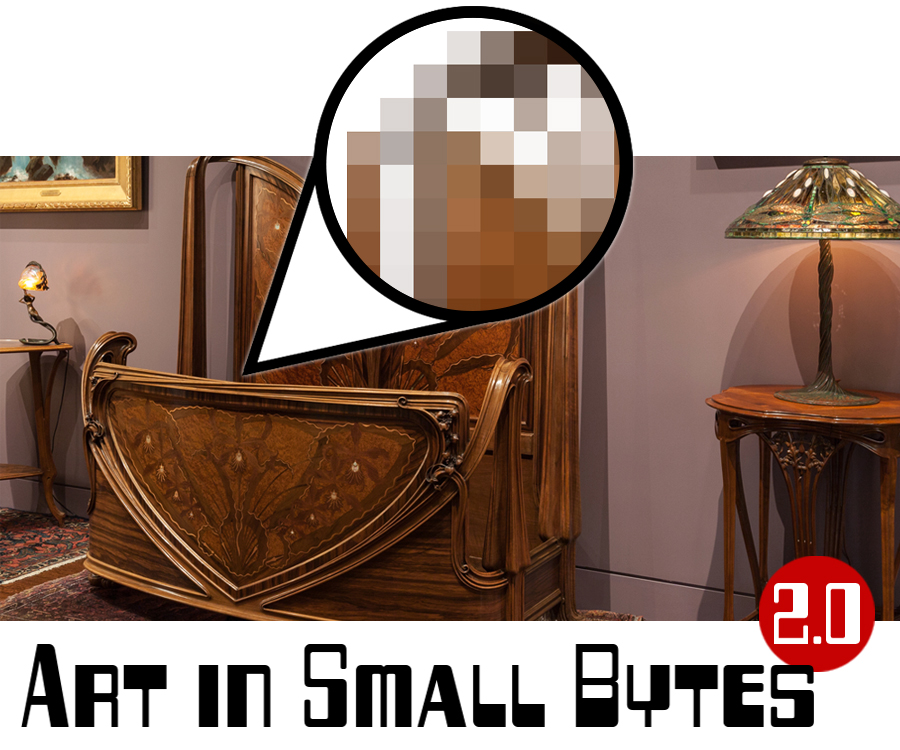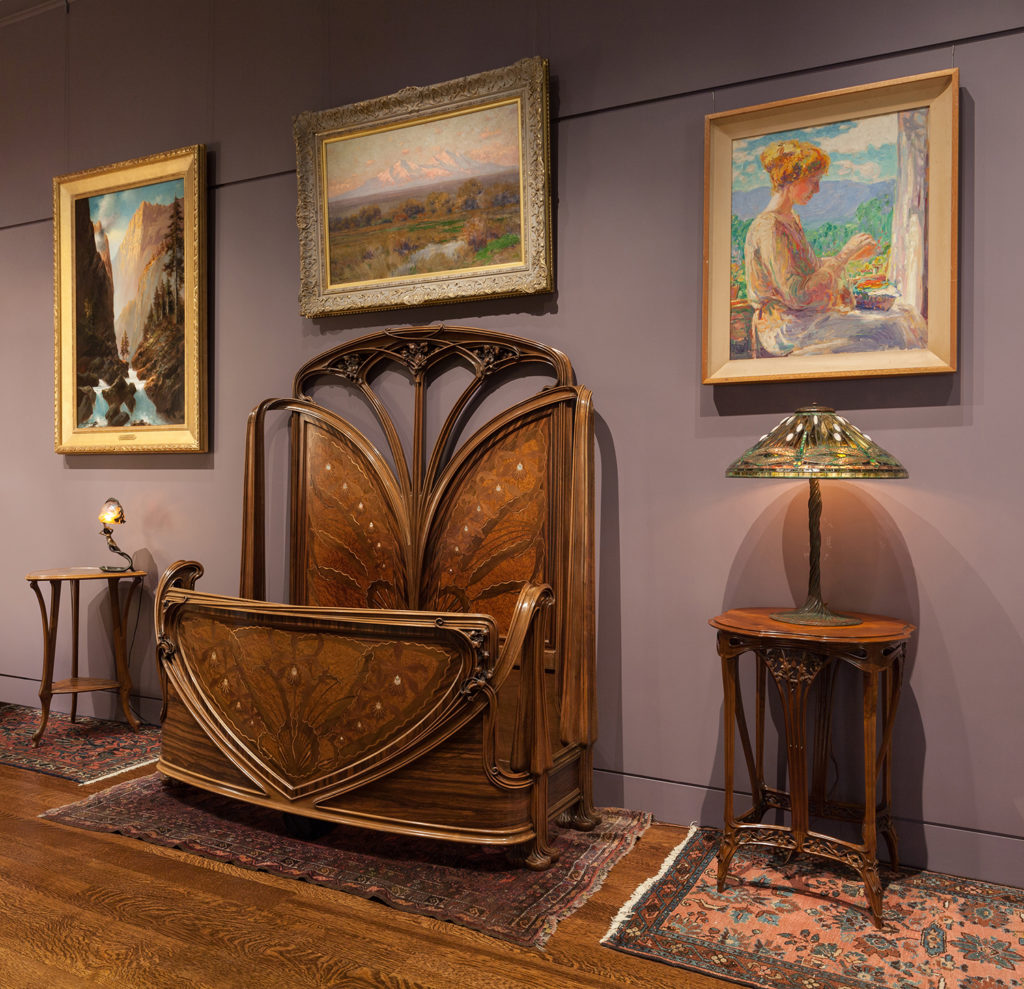VIRTUAL EXHIBITION
In computers, a “byte” is a unit of data made of eight zeros and ones that represents a character such as a letter or number. As in the computer world of bits and bytes, Kirkland Museum groups smaller pieces together to create a larger, unified whole.
For this virtual exhibition, we return to our earlier Art in Small Bytes concept and again break down a vignette grouping of period objects and artworks in the Museum into smaller pieces. This time we’re travelling further back into history and invite you to take a deep dive and “byte” into the Majorelle Bed vignette from Art Nouveau Gallery 4, pictured here. Double click on the image to see a larger version, then scroll down to byte into it and learn more about each individual piece.
The Museum’s Art Nouveau Gallery 4 actually features the three design movements of the Glasgow School from Scotland, Wiener Werkstätte from Austria and Art Nouveau from many countries, all from around the year 1900. The international decorative art is shown with impressionist paintings by artists connected to Colorado, giving the Museum our hallmark salon atmosphere.

Art Nouveau originated virtually simultaneously in France, Belgium and England. Siegfried Bing gave the style its name when he opened a shop and gallery in Paris in December 1895 called Maison de L’Art Nouveau (House of New Art). Art Nouveau is distinguished by its graceful, curving designs mostly emulating botanic forms, but sometimes bird, animal and human female forms. Examples are whiplash handles, playful serpentine grills and arching buttresses. The sinuous references to plants, tendrils, flowers and other natural forms are stylized rather than being realistic.
Majorelle Bed
Fun fact: Kirkland Museum created shortened bed rails to hold the headboard and footboard together for display. The original 71” bed rails are in storage at the Museum – much too long to allow us to exhibit the complete bed in this gallery!
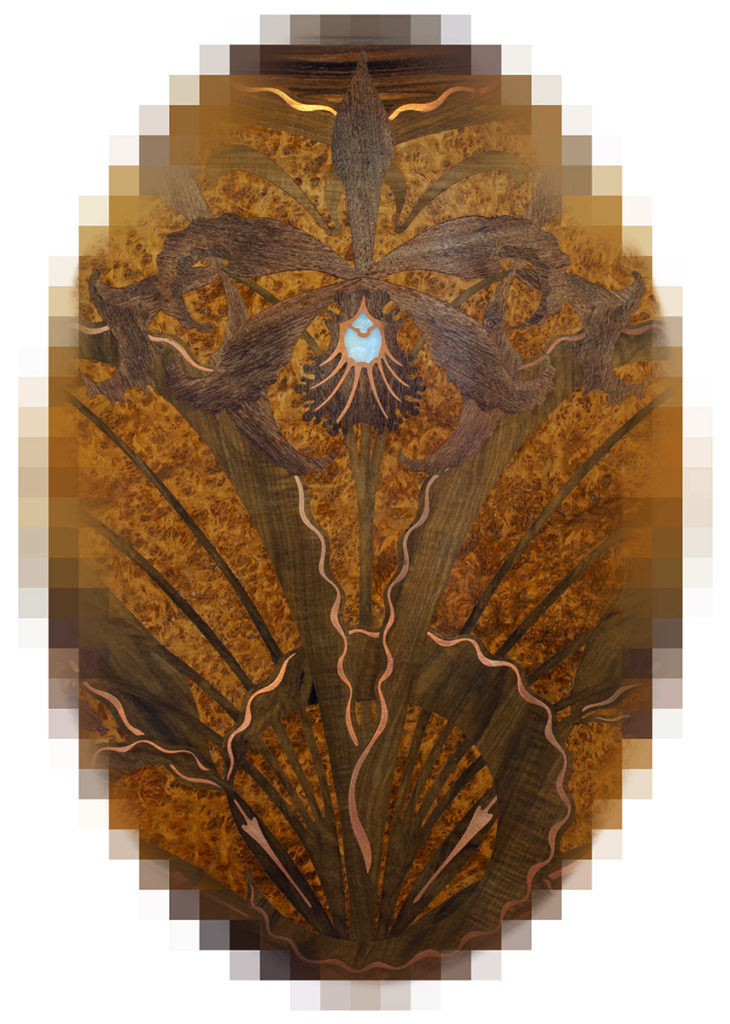
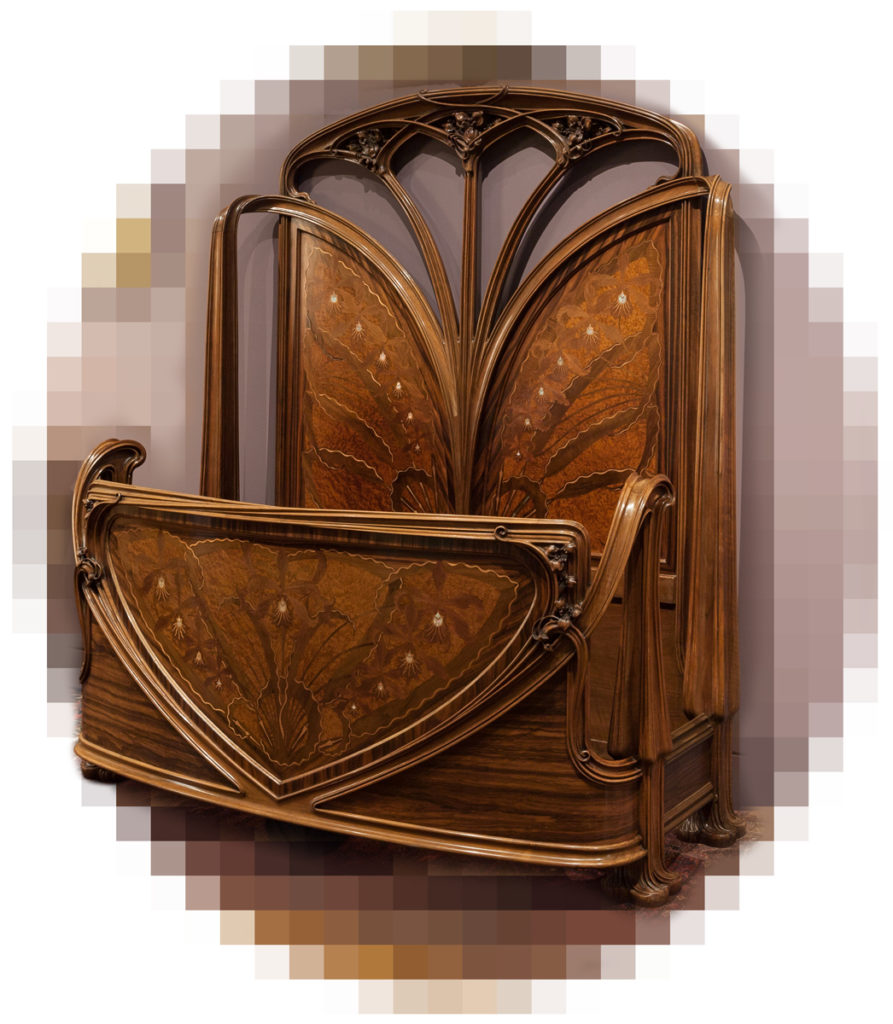
c. 1899–1900
designed by Louis Majorelle (1859–1926, French)
manufactured by Atelier Majorelle, Nancy, France
Can you imagine sleeping in this one-of-a-kind bed, covered in intricate inlays of orchids?
Learn more on the collection highlight page for this bed:
Majorelle Table
Fun fact: Louis Majorelle came from a family of furniture makers. He studied at the École des Beaux-Arts in Paris before returning to Nancy, France, to take over the family business upon his father’s death.
Learn more on the collection highlight page for this table:
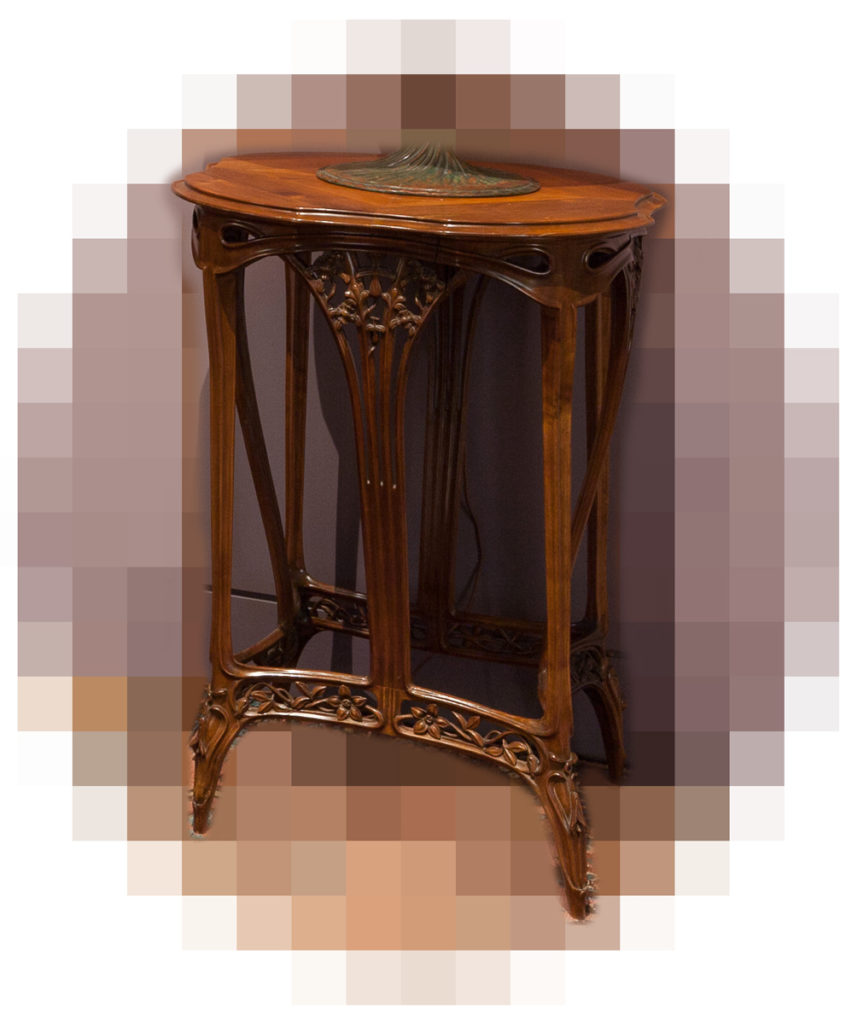
c. 1900
designed by Louis Majorelle (1859–1926, French)
manufactured by Atelier Majorelle, Nancy, France
Dragonfly Lamp
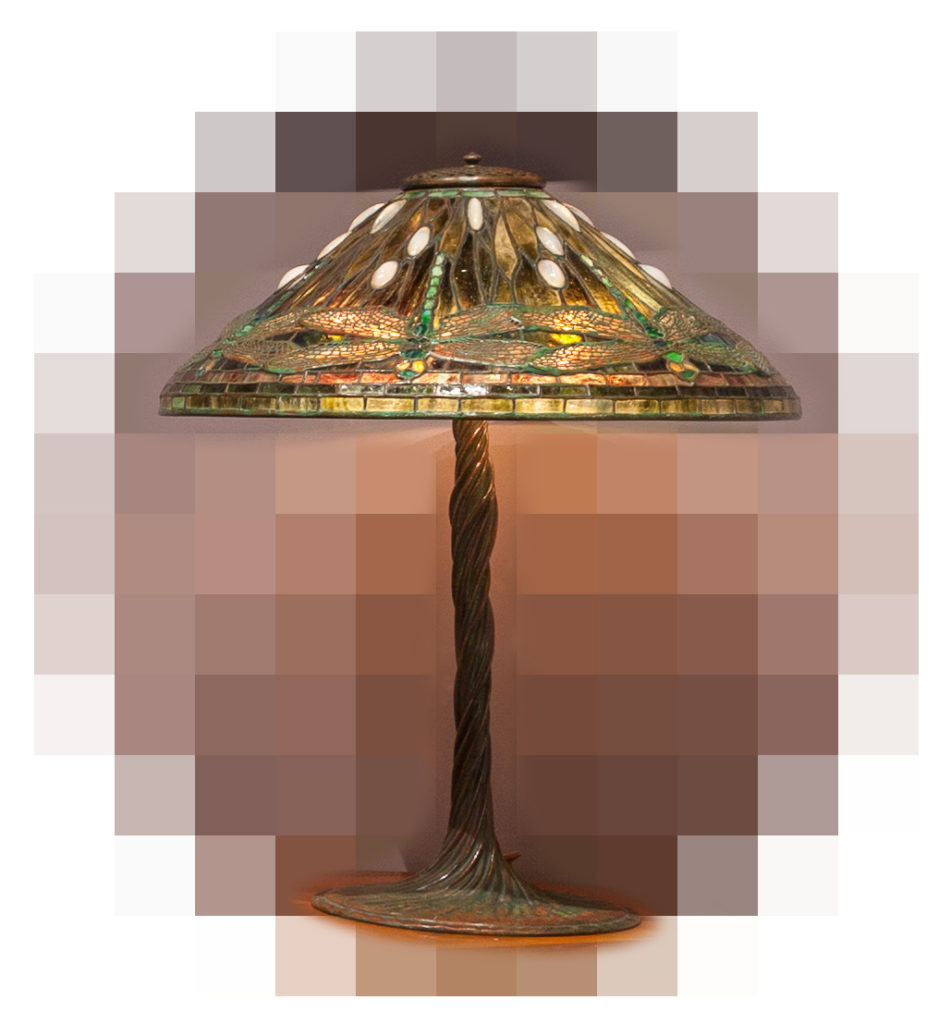
with leaded glass Dragonfly shade by Clara Wolcott Driscoll (1861–1944, American)
and bronze Twisted Vine base by Tiffany Studios, c. 1907
Learn more on the collection highlight page for this lamp:
Fun fact: Clara Wolcott (later Driscoll) graduated from the Western Reserve School of Design for Women (now the Cleveland Institute of Art) before moving to New York City and studying at the Metropolitan Museum Art School and eventually gaining employment at the Tiffany Glass Company.
Beginning in 1892, Driscoll was the supervisor of Tiffany’s Women’s Glass Cutting Department. Dragonfly designs were one of her specialties; a Tiffany dragonfly lampshade she designed won a medal at the 1900 Paris world’s fair.
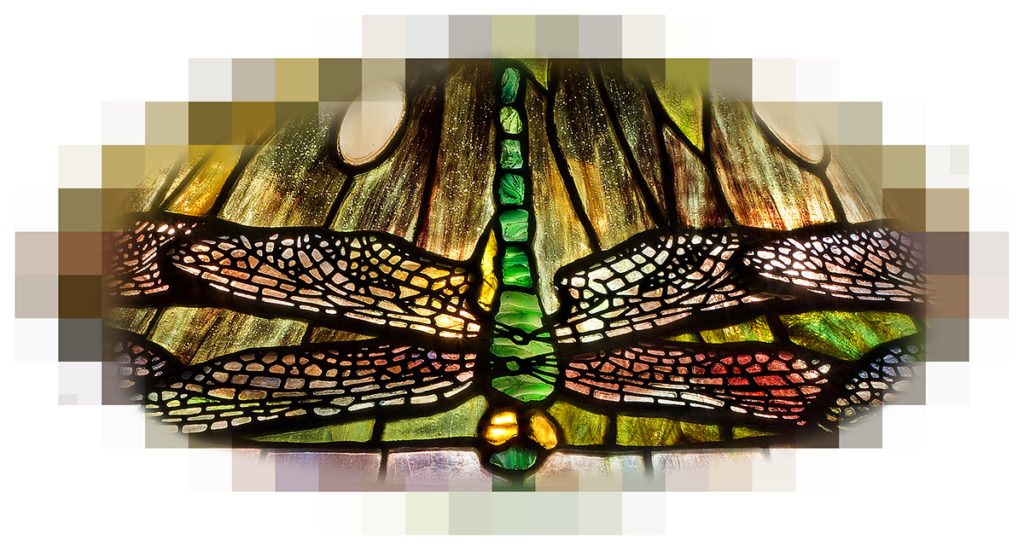
Émile Gallé Table
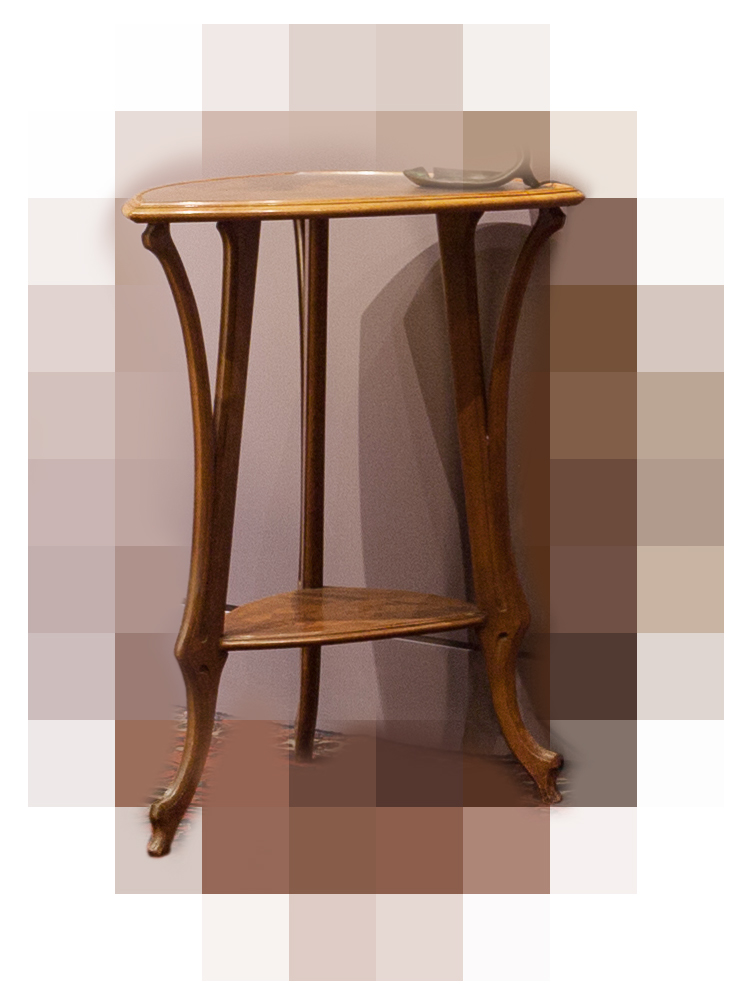
c. 1900
designed by Émile Gallé (1846–1904, French)
made in the artist’s workshops in Nancy, France
Fun fact: Émile Gallé designed several pieces of furniture but is best known as a glassmaker. The Museum has pieces of Gallé glass on display in a nearby case.
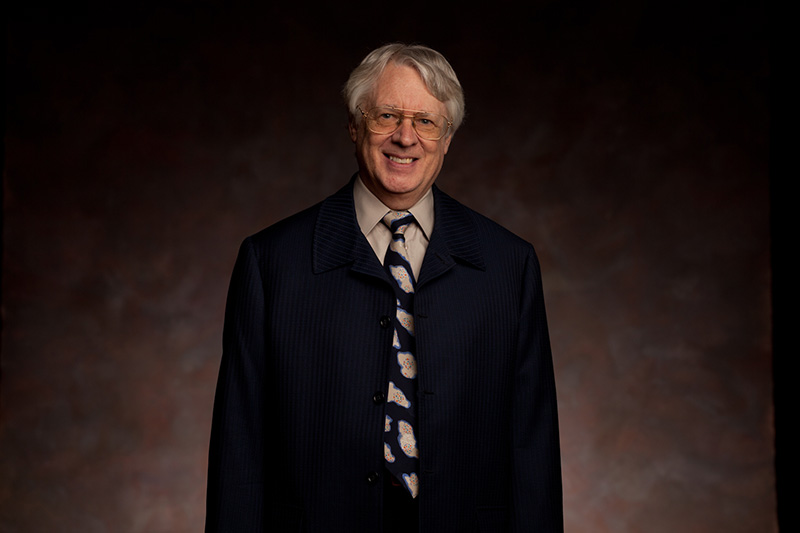
Click on the link below to see the marquetry on this table:
Bonnefond Lamp
This lamp uses a female body, plant tendrils and a lily pad—all classic Art Nouveau shapes—to create its beautiful curved shape.
Fun fact: The “C. BONNEFOND” mark can be found on a variety of figural lamps and vases, but information about the designer is hard to come by. The consensus seems to be that Bonnefond was a French sculptor born in 1858.
Learn more on the collection highlight page for this lamp:
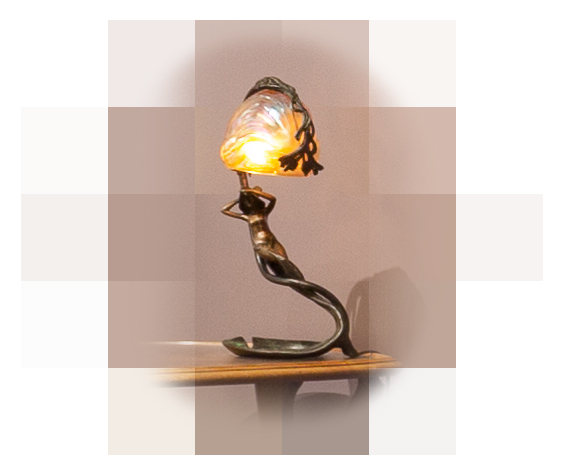

c. 1902
designed by Claude Bonnefond (French)
Paintings by Colorado Artists
The fine art paired with this vignette is Impressionism by Colorado artists.
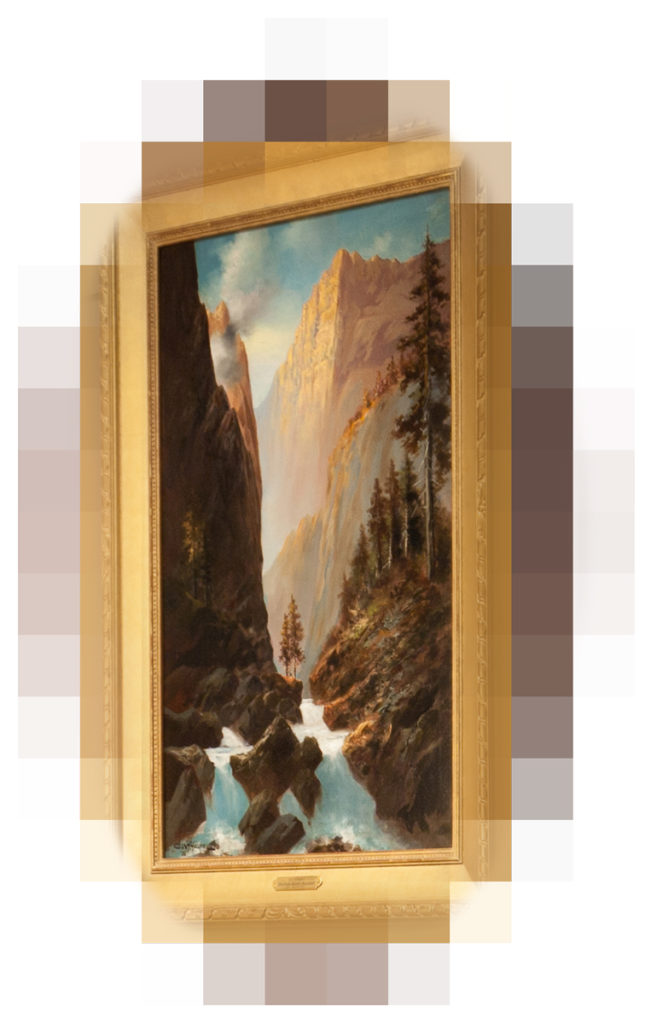

1906
by Charles Henry Harmon (1859–1936, American)
Gift of Robert & Julie Lewis
Fun fact: Charles Henry Harmon was commissioned by many railroad companies to paint scenes along their routes; this scene was along the Denver & Rio Grande Railroad’s narrow-gauge San Juan Extension. Could the smoke at the upper left be from a steam locomotive?
Part of the line survives today as the Cumbres & Toltec Scenic Railroad. Visitors can view Toltec Gorge by riding a steam-powered train between Chama, New Mexico and Antonito, Colorado.
Learn more on the collection highlight page for this painting:
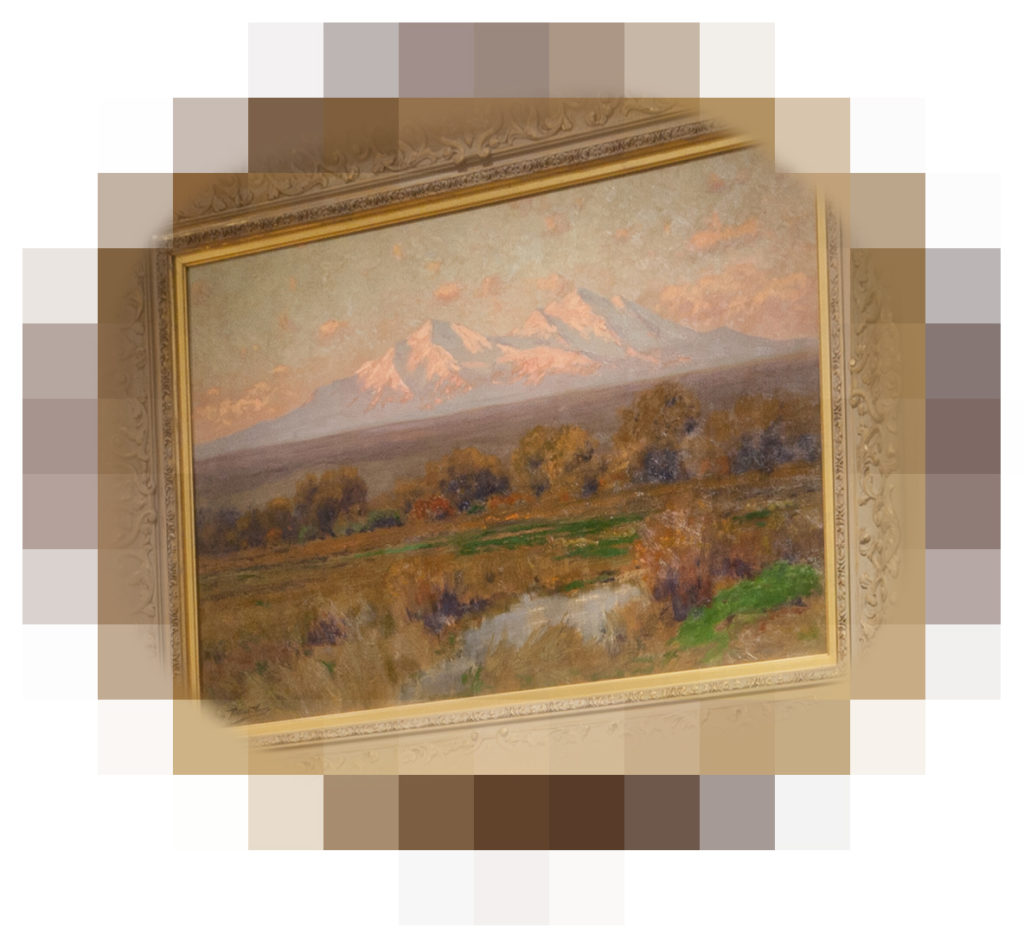

c. 1890–1895
by Charles Partridge Adams (1858–1942)




Fun fact: There is an additional note about the location written in pencil on the rear of the painting: “from the Valley of the Cucharas Creek vicinity of Walsenburg, CO.” Adams made several paintings of the Spanish Peaks from this vantage point.
Learn more on the collection highlight page for this painting:
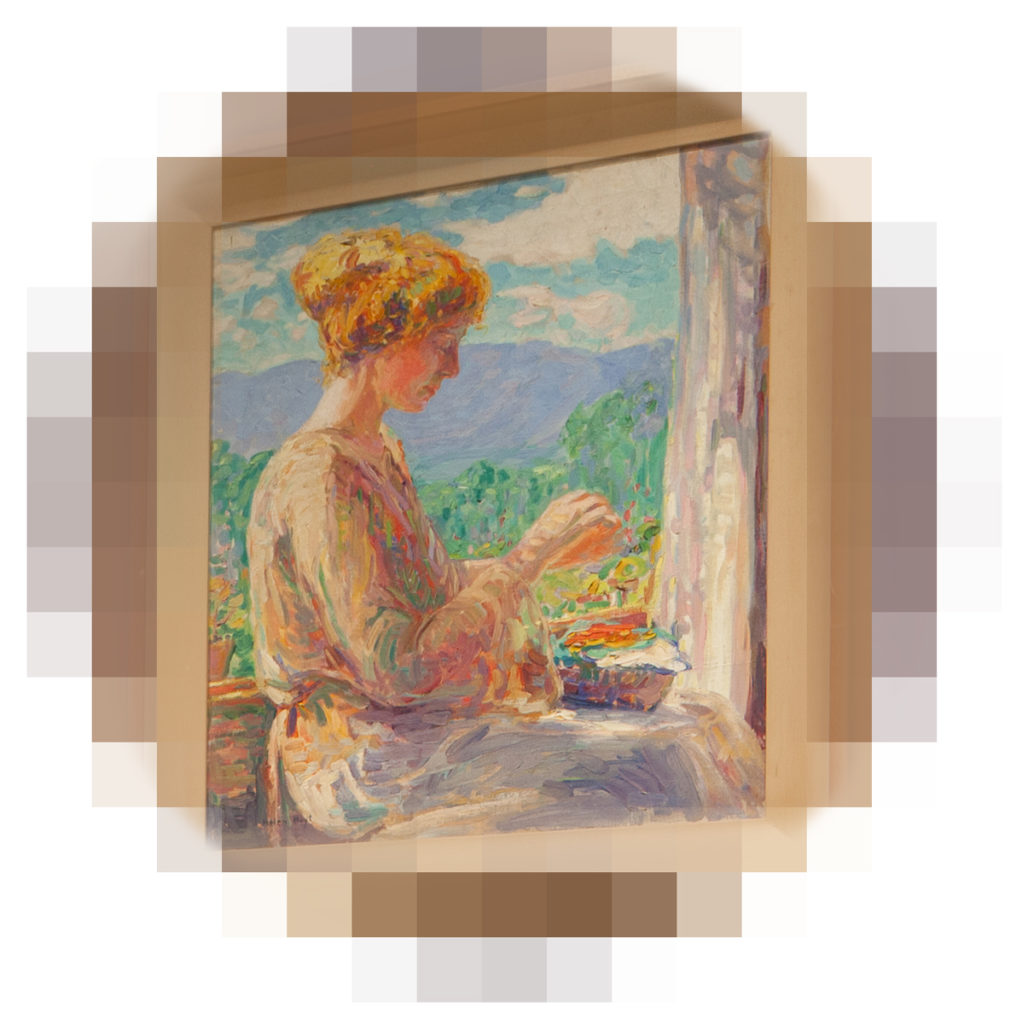

1914
by Helen Hoyt (1895–1971, American)
Fun fact: We think this could be a self-portrait. Helen Hoyt studied at the Broadmoor Art Academy in Colorado Springs; she is listed as a student there in a 1922 Colorado Springs City Directory.
Learn more on the collection highlight page for this painting:
Rugs
Founding Director & Curator Hugh Grant chooses rugs from the collection to go with each display.
To bookend this vignette, I chose two Lilihan Persian rugs on either side, similar in color with a warm pinkish background. Art Nouveau explores botanic themes, so both rugs have floral motifs in soft blues. The rugs’ subtle colors do not overpower the furniture and paintings, and yet the rugs can be enjoyed as impressive creations by themselves.
In the middle, under the extraordinary Majorelle bed, I placed an Esari Afghan rug because it has an overall brownish cast that relates to the bed, and it also has pink highlights which relate to the other two flanking rugs.”




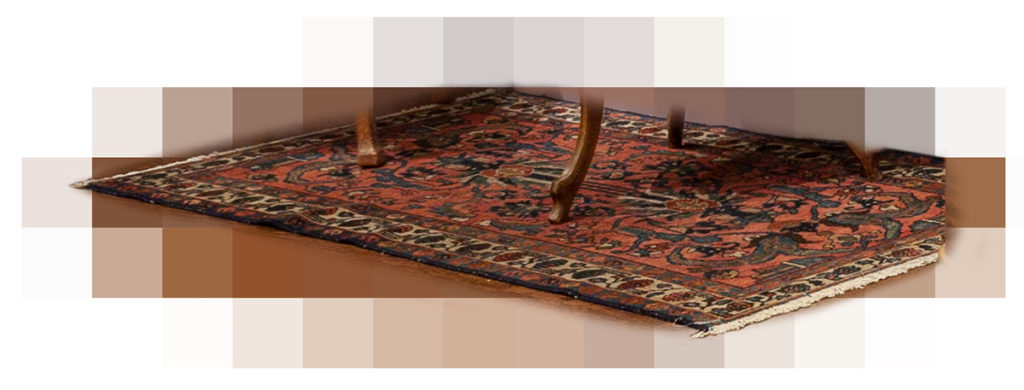

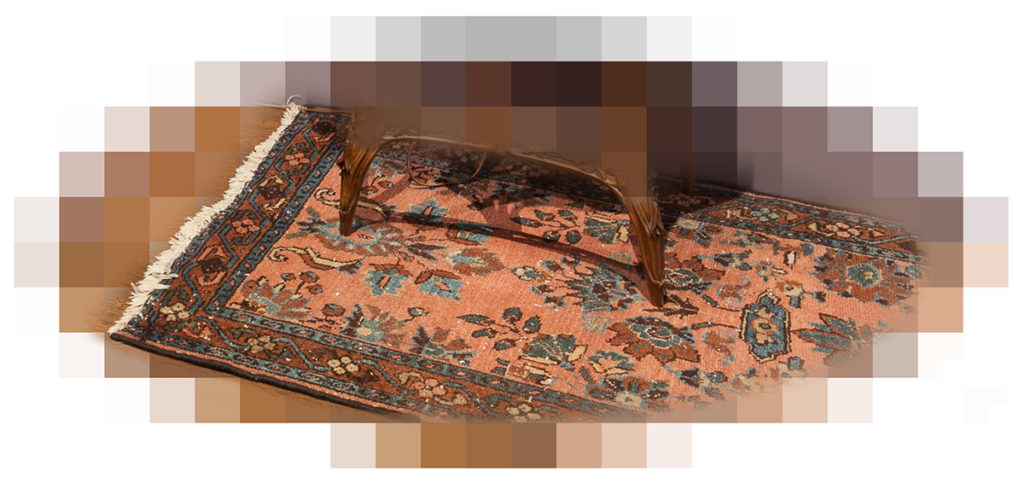

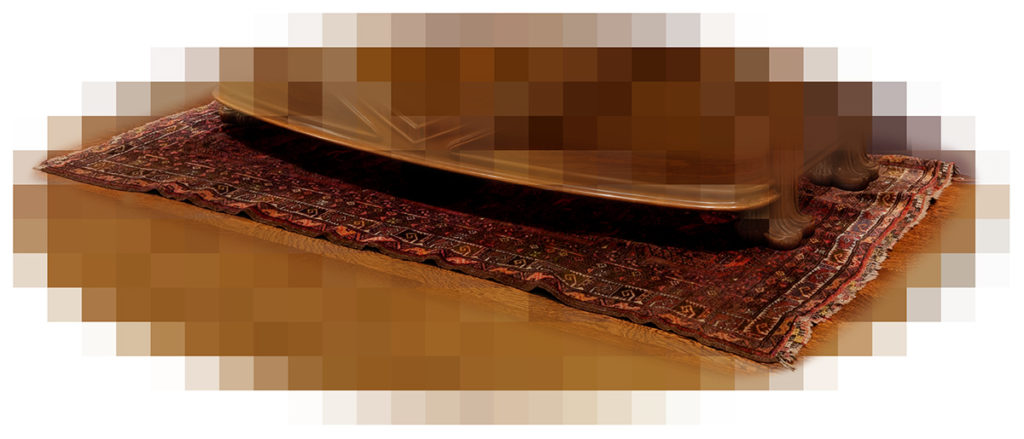

About this style of display
Kirkland Museum is distinguished by the salon style of display adopted by Founding Director & Curator Hugh Grant, who assembled these pieces for the collection and chose their placement in Art Nouveau Gallery 4.
Salon style means fine art (painting and sculpture) and decorative art (made to be used) are shown together in the same gallery, as if it was a home. This display method is rarely done, but can be seen in the Barnes Collection in Philadelphia, the Isabella Stewart Gardner Museum in Boston and somewhat at the Neue Galerie in New York.
This virtual exhibition was researched, assembled and designed by Christopher Herron, Deputy Curator, and Maya Wright, Director of Interpretation.
